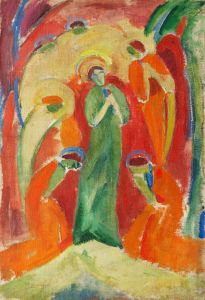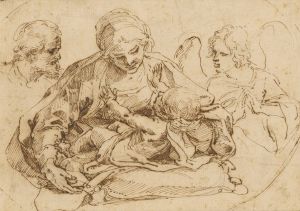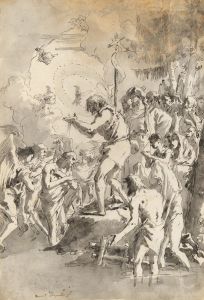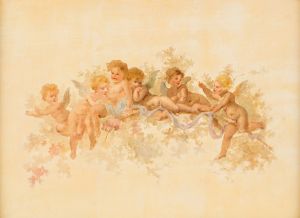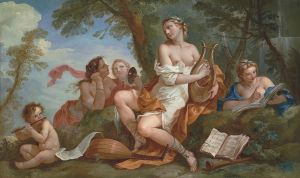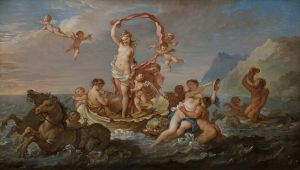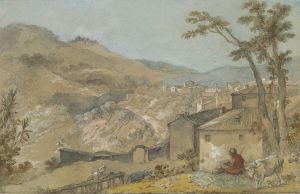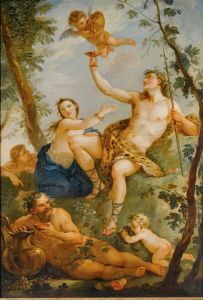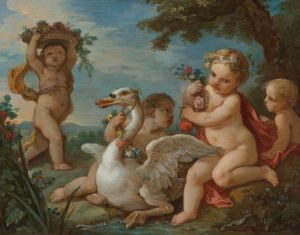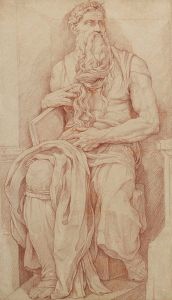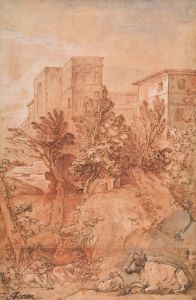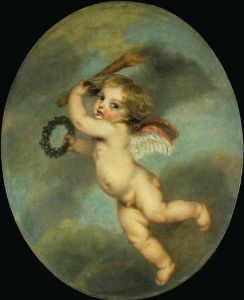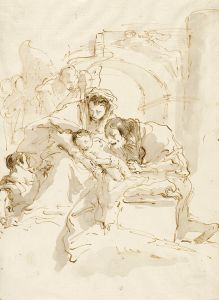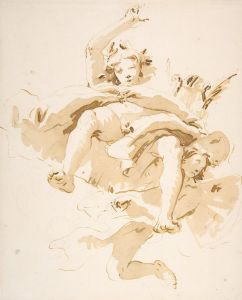
Angel Holding a Banderole
A hand-painted replica of Charles-Joseph Natoire’s masterpiece Angel Holding a Banderole, meticulously crafted by professional artists to capture the true essence of the original. Each piece is created with museum-quality canvas and rare mineral pigments, carefully painted by experienced artists with delicate brushstrokes and rich, layered colors to perfectly recreate the texture of the original artwork. Unlike machine-printed reproductions, this hand-painted version brings the painting to life, infused with the artist’s emotions and skill in every stroke. Whether for personal collection or home decoration, it instantly elevates the artistic atmosphere of any space.
Charles-Joseph Natoire was an 18th-century French painter known for his contributions to the Rococo movement, a style characterized by ornate detail, lightness, and elegance. One of his works, "Angel Holding a Banderole," exemplifies his skill in capturing the delicate and graceful qualities associated with this artistic period.
"Angel Holding a Banderole" is a painting that showcases Natoire's mastery in depicting ethereal and divine subjects. The painting features an angel, a common motif in religious and allegorical art, holding a banderole, which is a long, narrow banner or scroll. This element often contains inscriptions or messages, though the specific content of the banderole in this painting is not detailed in available records.
Natoire's work is notable for its soft color palette and fluid composition, which are hallmarks of the Rococo style. The angel is typically portrayed with a sense of movement and grace, embodying the lightness and decorative quality that Rococo art is celebrated for. The use of light and shadow in the painting would have been employed to enhance the three-dimensionality of the figure, giving it a lifelike presence.
Born in 1700 in Nîmes, France, Charles-Joseph Natoire trained under prominent artists of his time, including François Lemoyne. He gained recognition for his historical and religious paintings, as well as his decorative work in various prestigious locations, such as the Château de Versailles and the Hôtel de Soubise in Paris. Natoire's career was marked by his appointment as the director of the French Academy in Rome, a position that underscored his influence and standing in the art world of his era.
While "Angel Holding a Banderole" is not as widely known as some of Natoire's other works, it reflects the artist's ability to blend religious themes with the playful and ornate elements of Rococo art. The painting would have been intended to inspire contemplation and convey a sense of divine beauty, aligning with the period's fascination with the celestial and the sublime.
Natoire's contributions to art extend beyond his paintings; his role as an educator and director helped shape the next generation of artists. His influence is evident in the works of his students and in the continued appreciation of Rococo art. Despite the changing tastes in art that followed the Rococo period, Natoire's work remains a testament to the elegance and charm of 18th-century French painting.
In summary, "Angel Holding a Banderole" by Charles-Joseph Natoire is a fine example of Rococo art, characterized by its graceful depiction of an angelic figure. The painting highlights Natoire's skill in combining religious iconography with the stylistic elements of his time, contributing to his legacy as a significant figure in the history of French art.





